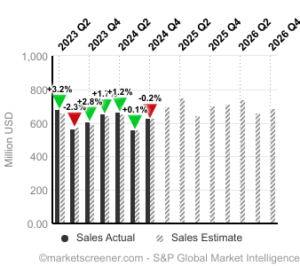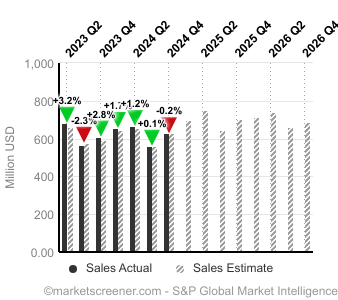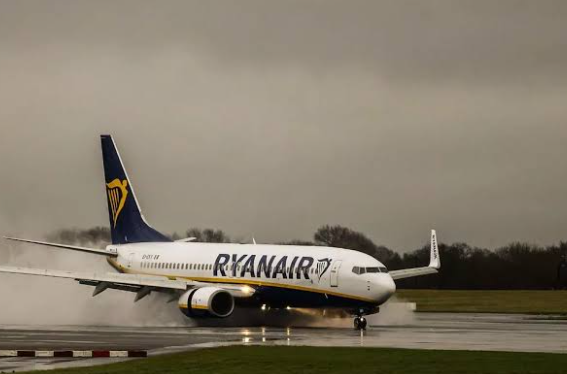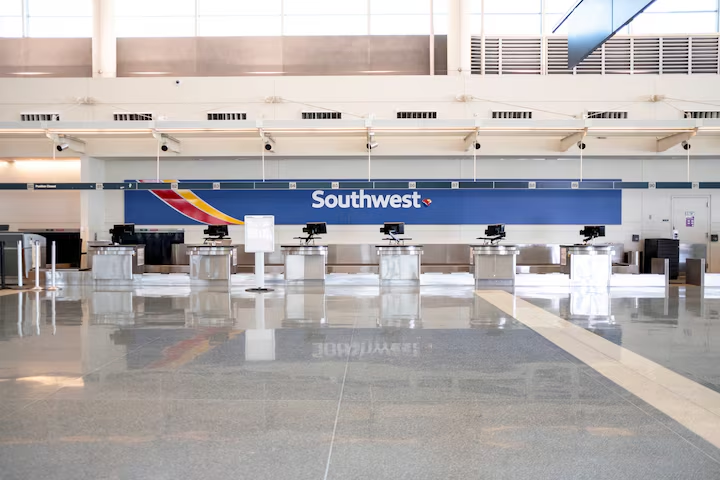Raymond James lifts Allegiant stock rating, cuts price target to $90
Raymond James Upgrades Allegiant Travel Stock Rating but Lowers Price Target to $90
Allegiant Travel Company (NASDAQ: ALGT), a well-known low-cost airline and leisure travel provider, recently received a mixed assessment from investment firm Raymond James. The firm upgraded its rating on Allegiant’s stock, signaling renewed confidence in the company’s long-term potential. However, despite the upgrade, Raymond James also cut its price target for Allegiant to $90 per share, reflecting ongoing challenges and risks facing the airline industry.

This decision highlights the complex dynamics affecting Allegiant’s business, including industry-wide headwinds, financial performance, and strategic initiatives. In this article, we’ll explore the reasons behind Raymond James’ rating adjustment, the airline’s current position in the market, and what investors should expect moving forward.
Allegiant Travel’s Business Model and Market Position
Allegiant Travel Company is a unique player in the airline industry. Unlike legacy carriers such as Delta (NYSE: DAL) or American Airlines (NASDAQ: AAL), Allegiant operates a low-cost, point-to-point business model. The company primarily serves underserved and smaller markets, connecting travelers to leisure destinations like Las Vegas, Orlando, and Phoenix.
Allegiant’s business model focuses on:
Point-to-Point Travel: Unlike hub-and-spoke carriers, Allegiant operates direct flights between secondary airports, reducing congestion and costs.
Low-Frequency Service: Rather than offering multiple flights per day, Allegiant schedules a few flights per week to maximize aircraft utilization.
Ancillary Revenue: The airline generates significant revenue from non-ticket sources, including baggage fees, seat selection, and vacation packages.
Cost-Effective Fleet Strategy: Allegiant primarily operates older aircraft, which reduces upfront capital expenditures but can lead to higher maintenance costs.
This model has enabled Allegiant to maintain profitability even in volatile economic conditions, but it also exposes the company to specific risks, including fluctuating fuel prices, labor costs, and consumer demand shifts.
Why Did Raymond James Upgrade Allegiant’s Stock Rating?


Raymond James’ decision to upgrade Allegiant’s stock rating suggests growing confidence in the airline’s ability to navigate market challenges and execute its long-term strategy. While the specific details of the upgrade were not disclosed, analysts generally consider several factors when revising stock ratings:
1. Potential for Demand Recovery
The airline industry has experienced significant turbulence over the past few years, particularly due to the COVID-19 pandemic. Travel demand plummeted in 2020 but has since rebounded as consumers return to leisure trips. Allegiant, with its focus on vacation destinations, stands to benefit from a sustained recovery in travel demand.
Despite economic uncertainties, domestic leisure travel remains strong, and Allegiant’s route network positions it well to capture this demand. If travel spending continues to rise, the company could see improved revenue growth.
2. Allegiant’s Strategic Initiatives
Allegiant has been actively working on growth and efficiency initiatives, which may have contributed to the upgrade. These initiatives include:
New Aircraft Acquisition: Allegiant has been modernizing its fleet with new Boeing 737 MAX aircraft, which are expected to offer better fuel efficiency and lower maintenance costs.
Expanded Route Network: The airline continues to add new destinations and increase frequencies on existing routes to optimize revenue potential.
Partnerships and Alliances: Allegiant has explored partnerships to enhance its offerings, including a previous attempt at a co-branded credit card and expanded vacation package deals.
If these initiatives yield positive results, they could enhance Allegiant’s financial performance and justify a more optimistic stock outlook.
3. Cost Management and Operational Improvements
Cost control is a critical factor for any low-cost carrier. Allegiant has been focusing on improving operational efficiency by optimizing scheduling, reducing maintenance expenses, and increasing ancillary revenue.
Given rising labor costs and inflationary pressures, effective cost management could help Allegiant maintain profitability. If Raymond James sees progress in this area, it could explain the stock rating upgrade.
Why Did Raymond James Cut the Price Target to $90?
While the rating upgrade signals confidence in Allegiant’s potential, the price target reduction to $90 suggests caution about near-term challenges. Several key factors likely influenced this decision:
1. Rising Fuel Costs and Inflation
One of the biggest risks for airlines is fuel price volatility. Jet fuel prices have fluctuated significantly due to geopolitical events, supply chain disruptions, and global economic conditions. If fuel costs continue to rise, Allegiant’s profit margins could be squeezed, making it harder to reach previous earnings expectations.
Additionally, inflation remains a concern for consumer spending. If discretionary income tightens, travelers may cut back on leisure trips, affecting Allegiant’s revenue.
2. Competitive Pressures
The airline industry is highly competitive, with major players like Southwest Airlines (NYSE: LUV) and Spirit Airlines (NYSE: SAVE) expanding their presence in Allegiant’s key markets. Increased competition can lead to fare wars and pressure on ticket prices, making it harder for Allegiant to maintain profitability.
Moreover, the potential merger between JetBlue (NASDAQ: JBLU) and Spirit, if approved, could create a stronger low-cost competitor that challenges Allegiant’s market share.
3. Economic Uncertainty and Potential Recession
Concerns about a potential economic downturn could weigh on airline stocks. While leisure travel has remained resilient, a slowdown in consumer spending could impact future demand. Investors may be cautious about airlines that rely heavily on discretionary travel.
4. Allegiant’s Debt Levels
Allegiant, like many airlines, took on additional debt during the pandemic to sustain operations. While the company has been working to manage its financial obligations, higher interest rates could increase borrowing costs and impact earnings.
If Allegiant struggles to reduce its debt load, it could limit the company’s ability to invest in growth initiatives. This financial pressure may have contributed to the lower price target.
What This Means for Investors
Raymond James’ mixed stance on Allegiant Travel highlights both opportunities and risks for investors. While the stock rating upgrade suggests confidence in Allegiant’s long-term potential, the reduced price target reflects caution about near-term headwinds.
Bullish Case for Allegiant (Why Investors Might Buy the Stock)
Strong Position in Leisure Travel: Allegiant’s focus on vacation destinations positions it well for continued travel demand.
Operational Efficiency Gains: Cost-cutting measures and fleet upgrades could improve profitability.
Potential for Stock Price Rebound: If the company successfully navigates industry challenges, the stock could rebound from current levels.
Bearish Case for Allegiant (Why Investors Might Avoid the Stock)
Fuel Price Volatility: Rising jet fuel costs could erode profit margins.
Economic Uncertainty: A potential recession could dampen consumer travel spending.
Competitive Threats: Increased competition from low-cost rivals could pressure ticket prices.
Conclusion
Raymond James’ decision to upgrade Allegiant Travel’s stock rating while lowering its price target to $90 reflects a nuanced view of the airline’s prospects. While Allegiant benefits from strong leisure travel demand and strategic initiatives, the company faces challenges related to fuel costs, economic uncertainty, and competitive pressures.
For investors, this assessment suggests a balanced approach: Allegiant could offer upside potential if it successfully manages costs and capitalizes on travel demand. However, near-term risks should not be ignored. As with any airline stock, volatility is likely, and investors should weigh both the opportunities and risks before making a decision.






